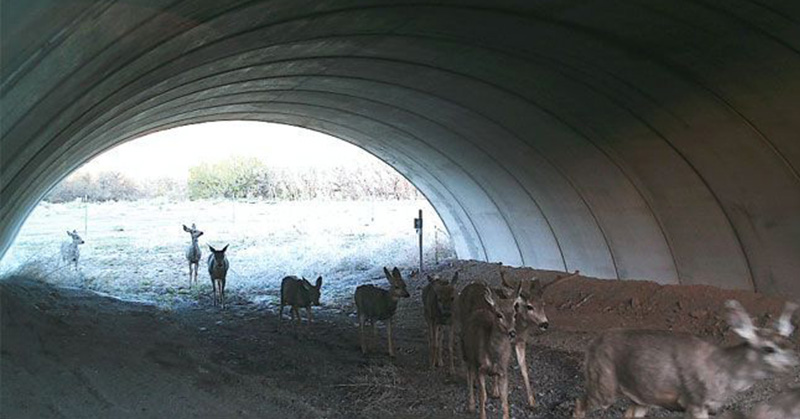As cities grow and humans continue to develop more of the world’s natural spaces, it is becoming increasingly difficult for humans and wild animals to coincide safely. This is especially evident along highways, with an estimated 2 million collisions between cars and large animals occur every year. (1)
In the state of Colorado, where wildlife is abundant, they have come up with a solution that is protecting both the animals trying to cross the roads and the people driving on them.
Wildlife Over and Underpasses
The Colorado Department of Transportation (CDOT) has built 30 overpasses and underpasses to help animals cross roads safely across the state, including two that cross major highways.
According to the CDOT, between 2006 and 2016 on Highway 160 animals and drivers collided 472 times. Most of those collisions were with Mule Deer. (2)
After reading these alarming stats, they built an underpass that allows wildlife to cross underneath the highway without having to worry about cars. Using remote cameras, they now have pictures of deer, raccoons, coyotes and other animals using the walkway. (2)
“At the [Durango] underpass we’re seeing a large number of mule deer going through the structure daily,” CDOT biologist Mark Lawler told the Post. “Animals are using the structure; we’re not just moving the problem.” (2)
Currently, the state is looking at more places along the highway where they can add safe animal crossings.
Animal Crossings Around the World
Plenty of other states and countries have also begun taking steps to ensure the safety of the animals trying to cross roads and the humans trying to drive down them:
- Christmas Island Crab Bridge
- Turtle Tunnels in Japan
- Blue Penguin Underpass in New Zealand
- Ecoducts in Banff National Park, Canada
- Rope Bridge in Mandai Lake
- Salamander Tunnels in New England
- Elephant Underpass in Kenya
- Bee Highway in Oslo
Taxpayers have to be on board
These special crossings are imperative for keeping humans and animals safe. Unfortunately, they can cost anywhere from $300,000 to well over $1 million to construct. Taxpayer money is crucial to help fund these crossings. (2)
The average cost of an animal-car collision, however, averages at around $4,000 per incident. The savings in damages to the highways, vehicles, and of course hospital and emergency care far outweigh the expense of putting in these crossings. The key is that they are well placed so that the most animals possible will use them. (2)
The Bottom Line
If you live in an area with plenty of wildlife but no safe way for them to cross the road, consider reaching out to a local politician or city planner. The more crossings constructed around the world, the more all species will benefit.
Keep Readings: This Cat Sanctuary Has a Caretaker Who Lives On a Greek Island With 55 Cats

